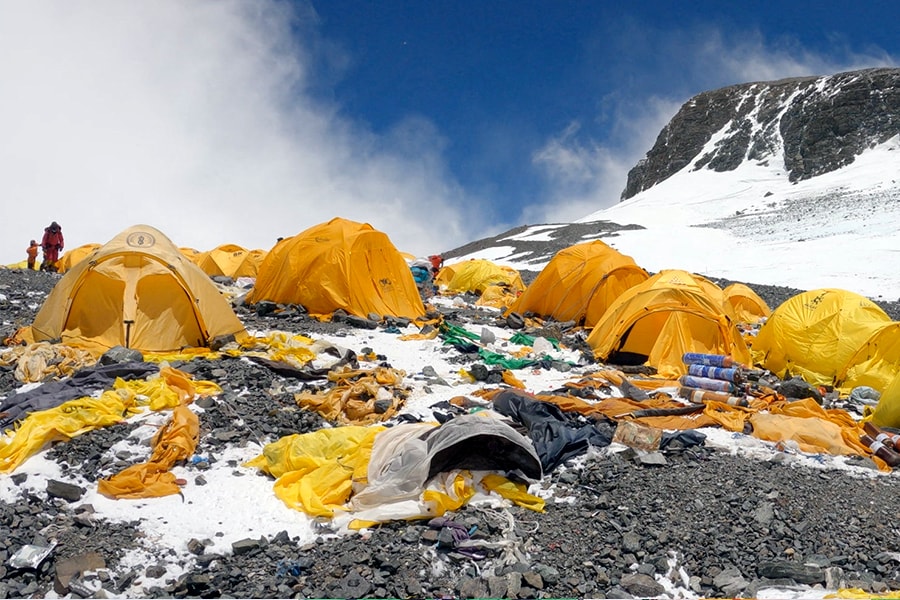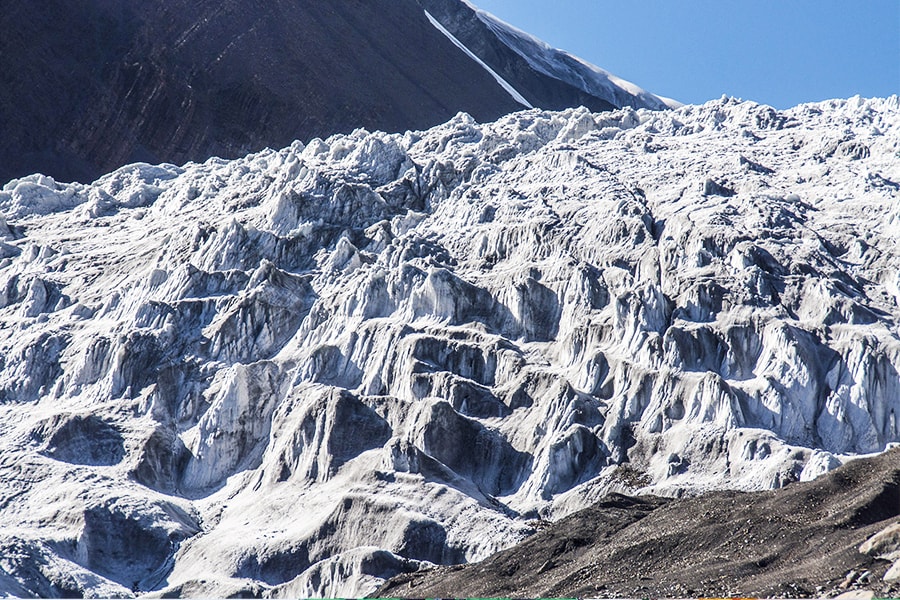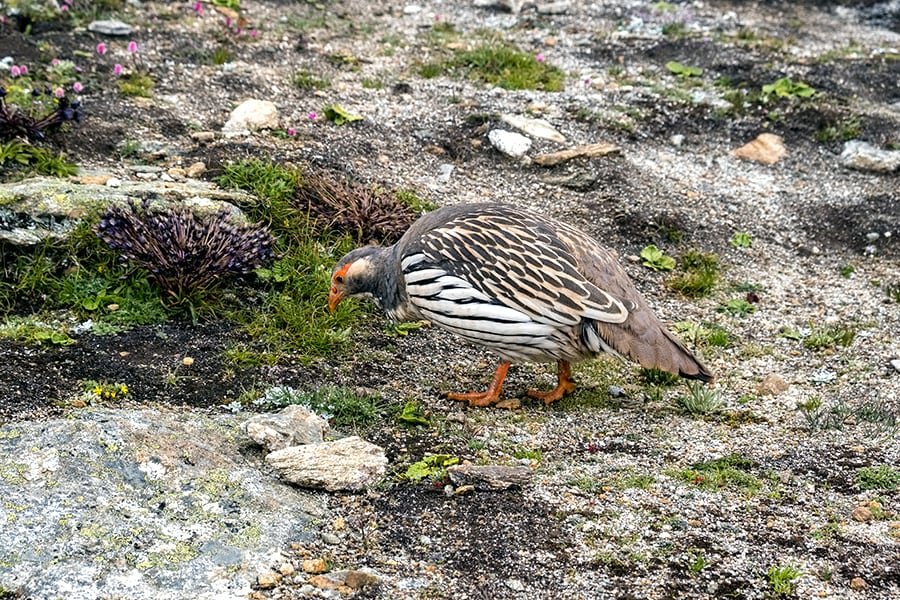
Meltdown Alarm: Nepal's mountains lost one-third of their ice in 30 years from global warming
On a recent visit to Solukhumbu, the area surrounding Mount Everest, UN Secretary-General Antonio Guterres rang an alarm for the world. In his words, "I am here today to cry out from the rooftop of the world: The glaciers are retreating, stop the madness"
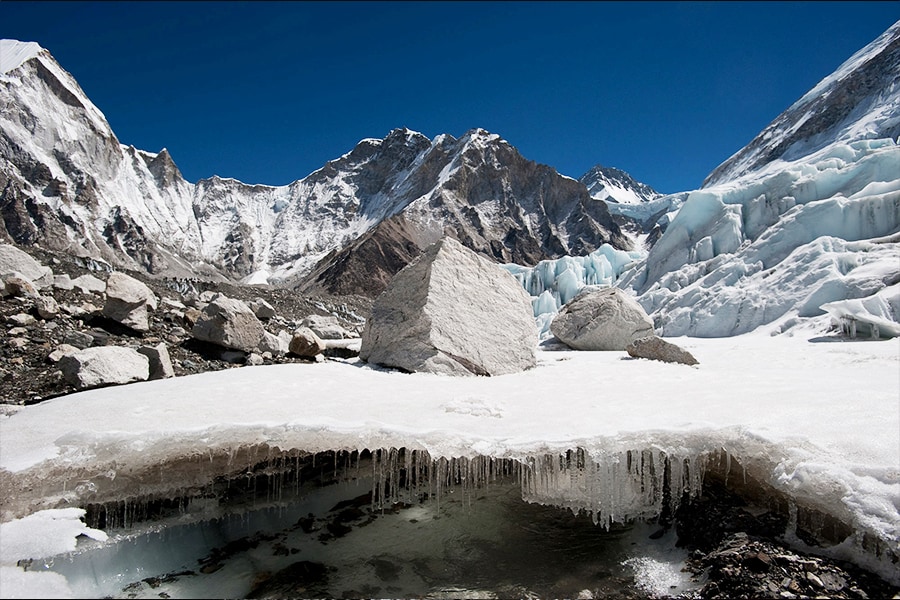 Image: Alex Treadway/ICIMOD/Handout via REUTERS
Image: Alex Treadway/ICIMOD/Handout via REUTERS
A file photo of water forming under Nepal's Khumbu glacier as the ice melts. Glaciers in the Hindu-Kush Himalaya could lose up to 75 percent of their volume by century's end due to global warming, scientists from the Kathmandu-based International Centre for Integrated Mountain Development said in a report, causing dangerous flooding and water shortages for nearly 2 billion people who live in the mountainous region.
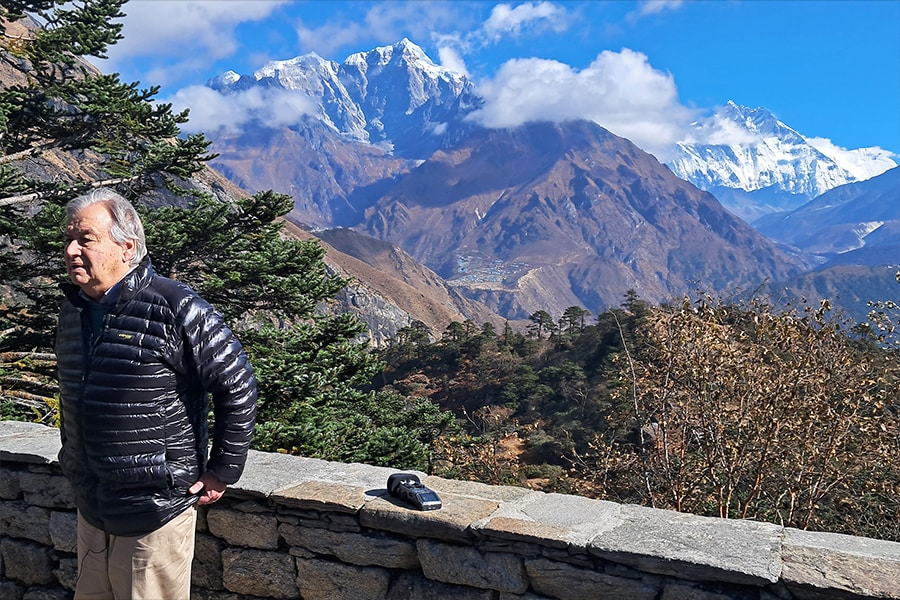 Image: Tshering SHERPA / AFP
Image: Tshering SHERPA / AFP
United Nations Secretary-General Antonio Guterres visits the Syangboche in the Everest region of Solukhumbu district on October 30, 2023. Guterres said that shrinking glaciers would cause major Himalayan rivers like the Indus, the Ganges, and the Brahmaputra to reduce flows massively, decimating deltas and precipitating shortages for the millions of people living downstream. He implored, "We must end the fossil fuel age, to limit global temperature rise to 1.5 degrees, to avert the worst of climate chaos."
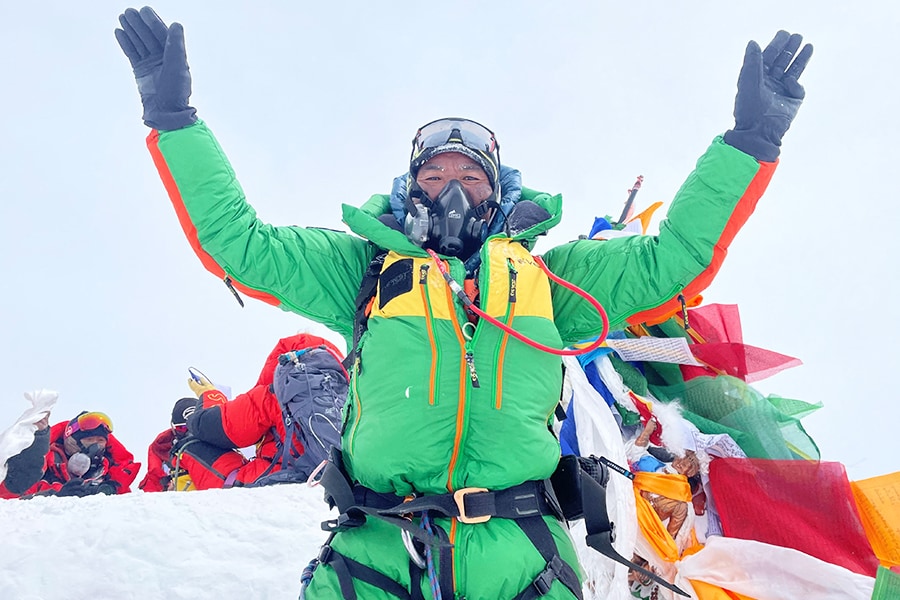 Image: Kami Rita Sherpa/Handout via REUTERS
Image: Kami Rita Sherpa/Handout via REUTERS
Kami Rita Sherpa, 53, a Nepali Mountaineer who climbed Mount Everest for a record 28 times, is pictured on the summit of Mount Everest during his 28th summit in Everest, May 23, 2023. Many prominent Sherpas from the community, growing up on the foothills of the snow-covered mountain they worship as the mother of the world, are startled and have been campaigning for years to save the Himalayan peaks and surrounding areas from the effects of global warming.
